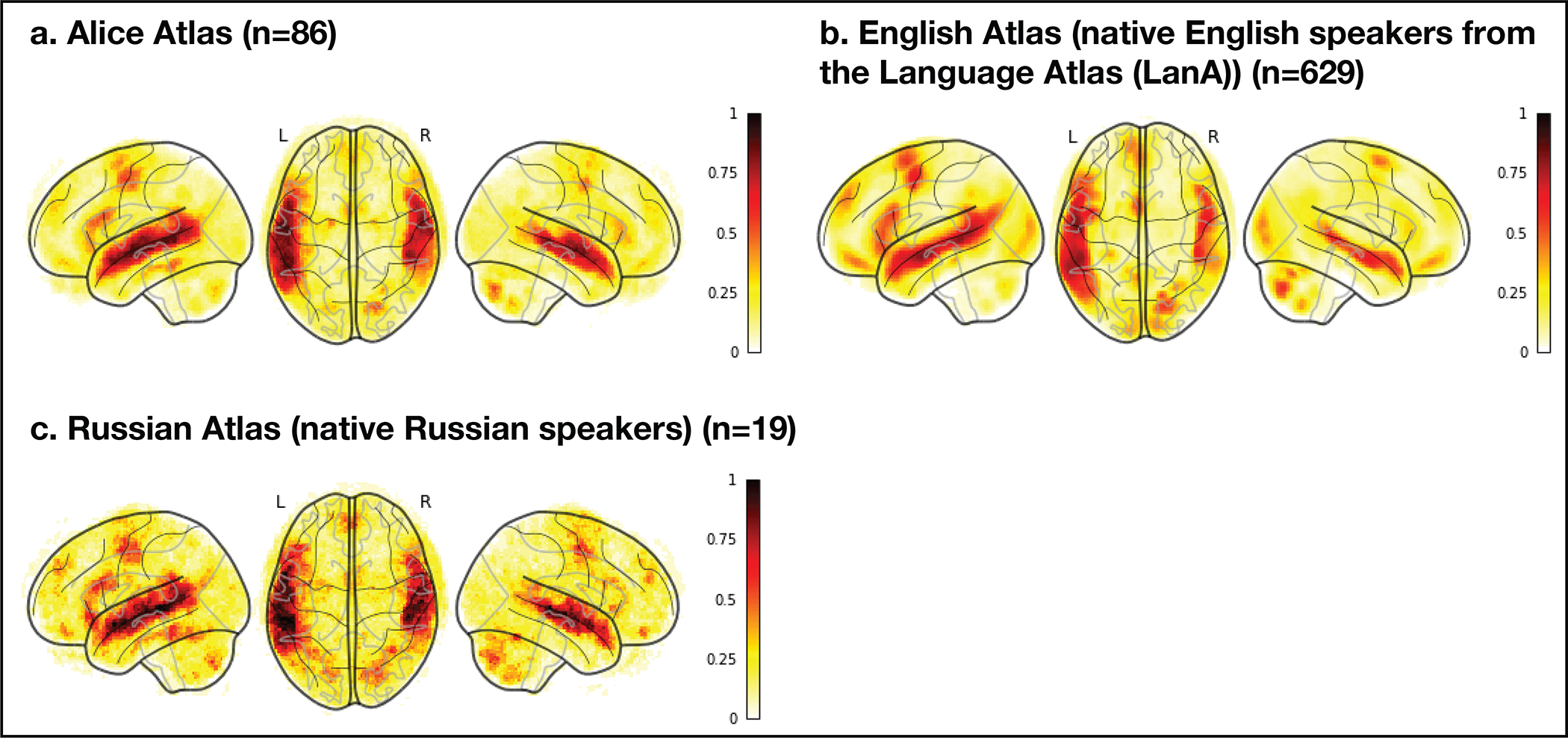Extended Data Fig. 8.

Comparison of three probabilistic overlap maps (atlases). Comparison of three probabilistic overlap maps (atlases): a) the Alice atlas (n=86 native speakers of 45 languages) created from the Native-language>Degraded-language maps; b) the English atlas (n=629 native English speakers; this is a subset of the Fedorenko lab’s Language Atlas (LanA56) created from the Sentences>Nonwords maps; and) the Russian Atlas (n=19 native Russian speakers) created from the Native-language>Degraded-language maps for the Russian version of the Alice localizer. All three atlases were created by selecting for each participant the top 10% of voxels (across the brain) based on the t-values for the relevant contrast in each participant, binarizing these maps, and then overlaying them in the common space. In each atlas, the value in each voxel corresponds to the proportion of participants (between 0 and 1) for whom that voxel belongs to the 10% of most language-responsive voxels. The probabilistic landscapes are similar across the atlases: within the union of the language parcels (see Extended Data Figure 1 caption for an explanation of why this approach is more conservative than performing the comparison across the brain), the Alice atlas is voxel-wise spatially correlated with both the English atlas (r=0.83) and the Russian atlas (r=0.85). Furthermore, the range of non-zero overlap values is comparable between the Alice atlas (0.1–0.87; average within the language parcels=0.08, median=0.05) and each of the other atlases (the English atlas: 0.002–0.79; average within the language parcels=0.07, median=0.03; the Russian atlas: 0.05–0.84; average within the language parcels=0.13, median=0.11). The latter result suggests that the inter-individual variability in the topographies of activation landscapes elicited in 86 participants of 45 diverse languages is comparable to the inter-individual variability observed among native speakers of the same language.
